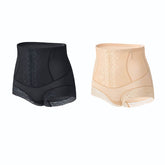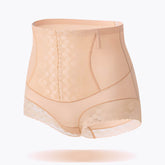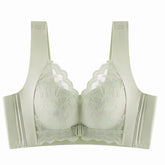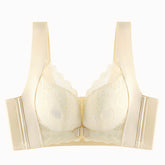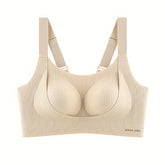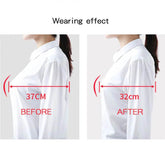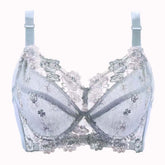The Perfect Breast " Everything You Need to Know"
BREAST SHAPES
Malformations, deviations from the breast shape considered normal, can be genetic or the result of a disease. They can develop during puberty or only appear with increasing age or after pregnancy. Most deformities do not pose a health risk but can become a great psychological burden for those affected.
PENDULOUS BREASTS (MASTOCYTOSIS)

Sagging breasts are present when the nipple is below the breast fold. The lower it is, the more pronounced the sagging breast. The cause is a weakness of the connective tissue and skin stretching. It leads to the fact that the glandular body in the breast increasingly lowers, and the breasts become saggy. Such a development is favored by a high weight of the breast - either by naturally heavy breasts or implants. Often sagging breasts occur after pregnancy. Before and after birth, the breasts produce milk for breastfeeding the child and thus become larger. After weaning, the circumference of the breasts decreases again, which does not infrequently leave sagging breasts.
Sagging breasts (mastocytosis)
DISPROPORTIONATE BREASTS (MACROMASTIA)

If the breasts are unnaturally large, physicians speak of macromastia. It is not possible to make a general statement as to when such a finding exists. There are certain "threshold values" for the weight of the breasts. However, these vary considerably: while some health insurance companies, for example, cover the costs of a breast reduction from 400 grams per breast, others only approve the assumption of costs from 500 grams per breast. In science, the term macromastia is often used only for 1000 grams per breast. However, concrete values neglect the individual body proportions of the customer. They play a decisive role in determining whether large breasts lead to health problems and/or represent a psychological burden and should therefore be reduced in the course of an operation.
Disproportionate breasts (macromastia)
UNDERDEVELOPED BREASTS (MICROMASTIA)

The majority of women find their breasts too small. However, in most cases, this assessment is merely subjective. In some cases, however, there is a so-called macromastia. This is a medically conspicuous small breast that is clearly disproportionate to the body size and figure of the affected woman. When such a disproportion exists cannot be defined from a medical point of view alone. Cultural and individual perceptions also play a major role here. Macromastia can be genetically determined or the result of a lack of breast muscles. Various hormonal disorders or the massive loss of fatty tissue that occurs in certain diseases (for example, anorexia) can also promote macromastia.
Underdeveloped breasts (macromastia)
TUBULAR BREAST

The so-called tubular breast is also rather pointed. However, in this genetic breast shape, the lower part of the breast is less developed than the upper part, and the underbust fold is also more raised. This results in a tubular breast shape, which is why it is also called a tube breast or trunk breast. A tubular breast often has large areolas and tends to droop more. Again, there are varying degrees of expression.
Tubular breast
ASYMMETRIC BREASTS (ANISOMASTIA)

In almost all women, left and right breasts differ from each other. Only in most women, the difference is small and, therefore, hardly noticeable. However, some women have clearly visible asymmetric breasts, where one breast is clearly smaller (and sometimes differently shaped) than the second breast. Often this asymmetry is genetic, but it can also be the result of injury or burns.
Asymmetrical breasts (anisomastia)
DROPPING BREASTS

When connective tissue or milk strands are shortened, the nipples are often pulled inward. The so-called slipped nipples can develop during puberty or are already congenital. In addition to the visual appearance, the affected women are primarily disturbed by the impaired ability to breastfeed. The latter can be lost completely if the inverted nipples are surgically corrected to change the appearance of the nipples.
TIPS FOR THE PERFECT BREAST
Tip No. 1 for the perfect breast
Sports
Special exercises can be used to strengthen the pectoral muscle that supports the breasts. Especially breaststroke and push-ups can have a positive effect. It is also effective to press the palms of your hands firmly against each other at chest level for about 30 seconds several times a day. You can find out more about chest training in our magazine.
Tip No. 2 for the perfect chest
Keep your weight constant
Rapid and large fluctuations in weight put a strain on the connective tissue. The extreme stretching of skin and tissue during weight gain increases the risk of sagging breasts, as does radical weight loss in a short time, which can cause the breasts to sag.
Tip No. 3 for the perfect breast
Healthy lifestyle
Eating a healthy, balanced diet and avoiding nicotine, alcohol, and excessive sun exposure can be detrimental to the skin and connective tissue. With a healthy lifestyle, the firmness of the bust can be maintained for longer.
Tip No. 4 for the perfect breast
Good bra
Especially for large and heavy breasts, the bra fulfills an important function. It supports the breast and delays sagging - provided it fits properly. In our magazine, you will find more information about bra sizes.
Tip No. 5 for the perfect breast
Care
Creams moisturize the skin. They should always be applied from the bottom up. Massages stimulate blood circulation and thus strengthen the connective tissue.
WHAT OTHER MEASURES ARE THERE?
Especially in the case of genetically caused breast malformations, only surgical measures can help to correct the breast shape or size. Depending on the type of malformation, different surgical procedures are available:
Breast augmentation: Here, the volume of the breast is increased through the use of implants or autologous fat.
Breast reduction: The breast is surgically reduced by removing fatty and glandular tissue.
Breast lift: This procedure optimizes breast shape by lifting and tightening sagging breasts.
Breast reconstruction: After a mastectomy, the breast is reconstructed using implants or the patient's own tissue.


